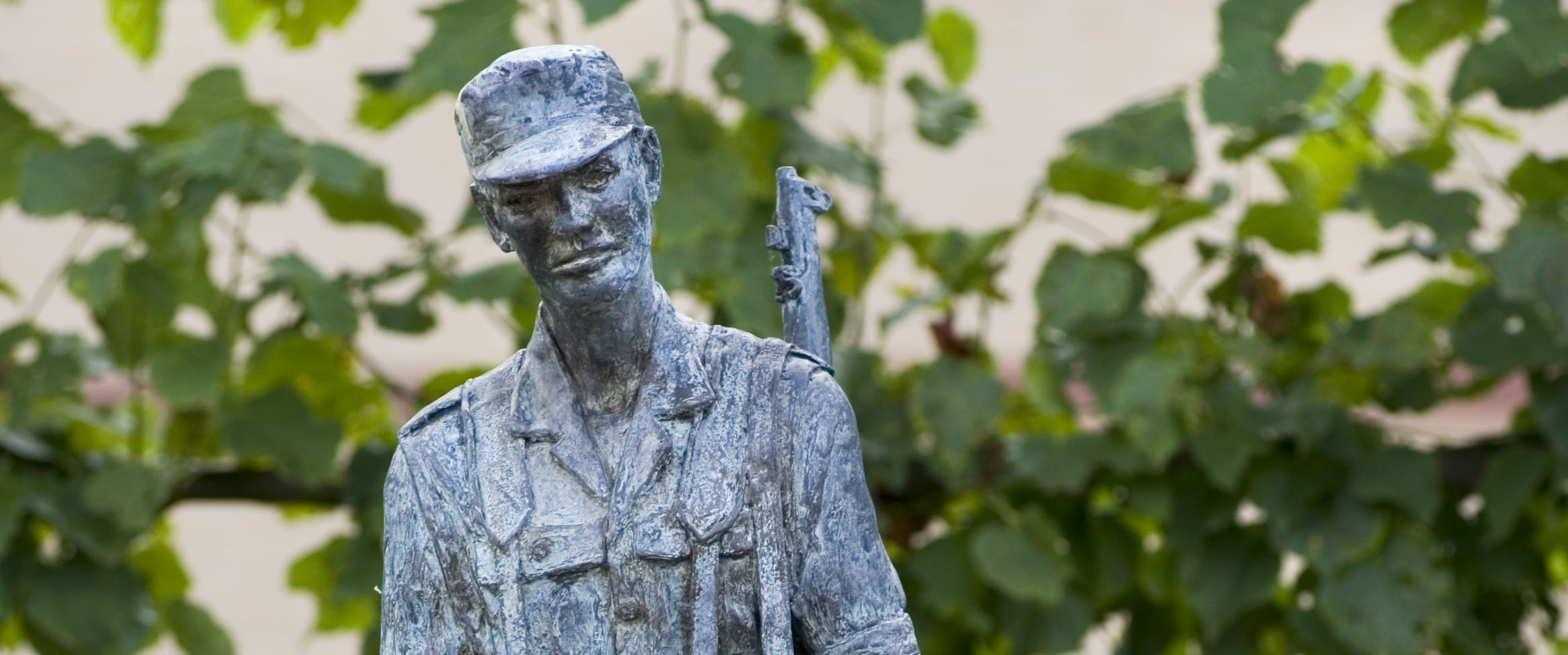
15 Sep Dutch troops and the Surinaamse Krijgsmacht (blog by Ellen Klinkers)
Serious riots were not expected, but ethnic tensions between Creoles and Hindostanis were heating up a few months before Suriname’s independence in 1975. The last detachment of Dutch soldiers was prepared to suppress any upheaval and guarantee a safe Dutch retreat. An interview − as part of my research project on the Dutch army in Suriname, 1940-1975 − with a former Dutch soldier nearly forty years later made me realize that a military intervention had been a real possibility.
One evening in 1975, he heard the sirens in Paramaribo and saw the glow of fire reflected in the sky. All soldiers were consigned to the barracks because police and Surinamese authorities had called in military assistance. As deputy commander, he distributed the ammunition among his men. On top of his bed he counted out the bullets: 15 for each soldier. Weapons were loaded, and gas masks prepared. They were handed a baton and shield, also. They had practiced the Maintaining Public Order drill (Handhaving Openbare Orde) dozens of times, and sometimes things got rough when Dutch soldiers were fighting against their Surinamese colleagues who were pretending to be activists.
Since the 1950s Suriname had developed as a democratic, autonomous state within the Dutch Kingdom. Nevertheless, Dutch troops were still stationed in Suriname, and Suriname’s government could ask for military assistance in times of crisis. A labor conflict on Curacao (the Dutch Antilles), which ended in a revolt on May 30, 1969, had made the Dutch government conscious that the room for intervention in their overseas territories was limited. The local authorities in Curacao had mobilized the Dutch Marines for assistance to end the uproar. This military response was successful in restoring order, but was criticized at home and abroad for being overtly colonial. It was obvious that a recurrence had to be prevented in Suriname, but was there any guarantee?
My interviewee realized that his attitude towards using force had changed when he had arrived in Suriname at the beginning of 1975. He never expected to be called into action against the people. He didn’t wanted to, but yet: ‘you have committed yourself to the army. You are there. And when you’re wearing a uniform and your gear, you are a different person than when wearing jeans. You are committed to each other too. Or you have to say in unison: ‘we are not going to do this.’ But that is not how it works. It is in everybody’s interest that you do it right, and you can only hope that there won’t be any troubles. Some were nervous, of course. But they could handle it. We had been there quite some time, had done many things together, tracking through the woods, the swamps with all the insects and the heat.’
After waiting for an hour, the tension lessened. Then there was the message that the police had everything under control. There was a sense of great relief among the soldiers. Suriname could now prepare itself for independence on November 25, 1975. The Dutch troops got ready to go home.
Within only a few months the Dutch troops had been transformed in the Surinaamse Krijgsmacht (Surinamese Armed Forces). And what did it mean that the last remnant of Dutch colonial power − troops trained for dealing with internal affairs − became the blueprint of Suriname’s army after independence?




No Comments